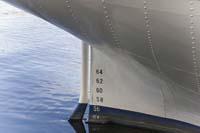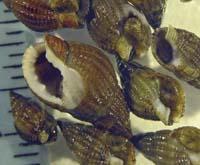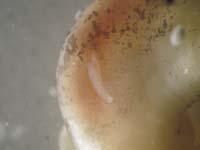The sex of mollusks as indicators of pollution

Stable surfaces are highly appreciated at sea, especially if they are shallow. Put a surface in the sea, like a brick, and in a short time you will have an entire ecosystem: microorganisms, algae, briozoos, cirripedes, polychaetes...
That is what happens, in the absence of measures, in the hulls of the ships. But the owner of the boat is not interested in having an ecosystem in the hull, not so. On the one hand, because it does not benefit the material, and on the other, because the transport of all this fauna and flora considerably increases friction, which will result in greater fuel consumption.
Therefore, special paints are used to keep the lower parts of the boats clean and smooth. These paintings contain biocides, toxic substances to kill living things. Well, the biocide most used in boat paints in recent decades is tin tributyl or TBT.
Beyond the helmet
The problem is that the influence of TVD is not limited to the container hull. Conclusions can be broader than desired. Precisely because of the effects of TVD on bivalve crops and marine ecosystems, since the 1980s, in several countries its use has been progressively restricted, being banned in Europe since 1 January 2008.

However, these substances do not disappear overnight, nor of course their effect on the environment. AZTI-Tecnalia has carried out a study to know the current situation of Gipuzkoa, funded by the Department of Innovation and Knowledge Society of the Provincial Council of Gipuzkoa and the Water Directorate of the Basque Government.
There is a background. In Gipuzkoa, the first study on TBT contamination was conducted by the team of Professor Esmeralda Millán of the Department of Applied Chemistry of the University of the Basque Country in 2000. This study found very high concentrations of TBT in the sediments of some Gipuzkoa estuaries.
From this study, AZTI-Tecnalia researchers wanted to know the evolution of this contamination. The new results show a generalized decrease in DVT concentration in sediments compared to 2000. However, according to the researchers, the current level remains environmentally sensitive.
Females
To analyze its impact on the environment, in addition to the measurement of TVD contamination in sediments, AZTI-Tecnalia has also used biomonitors. The degree of imposex has been measured in two species of gasteropods, that is, it has been verified if in females there appears some anatomical characteristic of males.
Blakeman S. Researcher Smith (University of Rochester, USA) discovered this phenomenon in 1971: he discovered that some females of gastropods developed the penis and the deferent tube, a phenomenon he called imposex. Subsequently, several researchers have seen that this abnormality in females is precisely due to DVT. For this reason, at present, several international institutions and agreements recommend evaluating the imposex phenomenon when analyzing the contamination caused by DVT.

The populations of the gastropods Nassarius reticulatus and Nassarius nitidus have measured the degree of imposex in Gipuzkoa, being the highest level in the area of Lezo, in the estuary of the river Oiartzun. All the females analyzed in this area had very developed the penis and the deferent tube. On the contrary, in females located in areas far from maritime traffic no remains of imposex have been found.
To continue the study, we wanted to measure the bioavailability of DVT currently present in the medium, that is, the degree of availability of this substance for living beings or their assimilation. For this purpose they took the gastropods of the zones without imposex and put them in the port of Pasaia for 75 days. This experiment highlighted the influence of TVD: During these 75 days, 39% of females developed a penis or vas deferens.
On the other hand, researchers say that the use of these gasteropods as biomonitors is effective in evaluating the bioavailability of TV. In this way, this procedure will be very useful for monitoring the improvement that the marine environment should have as a result of the European ban. In the coming years, this improvement can be verified through risk tracking.





